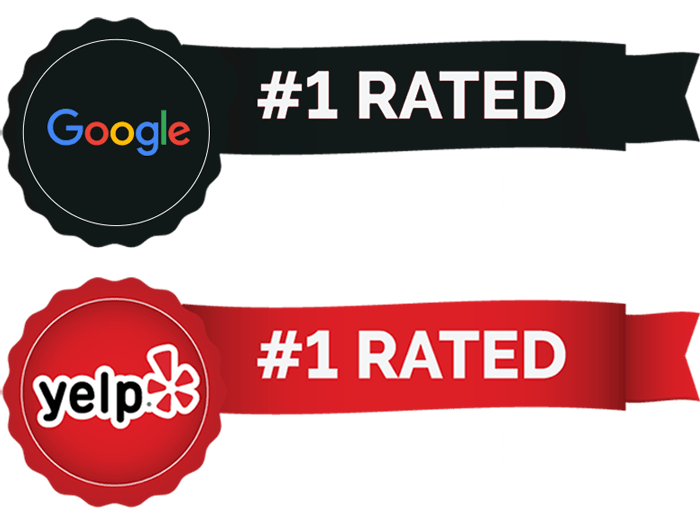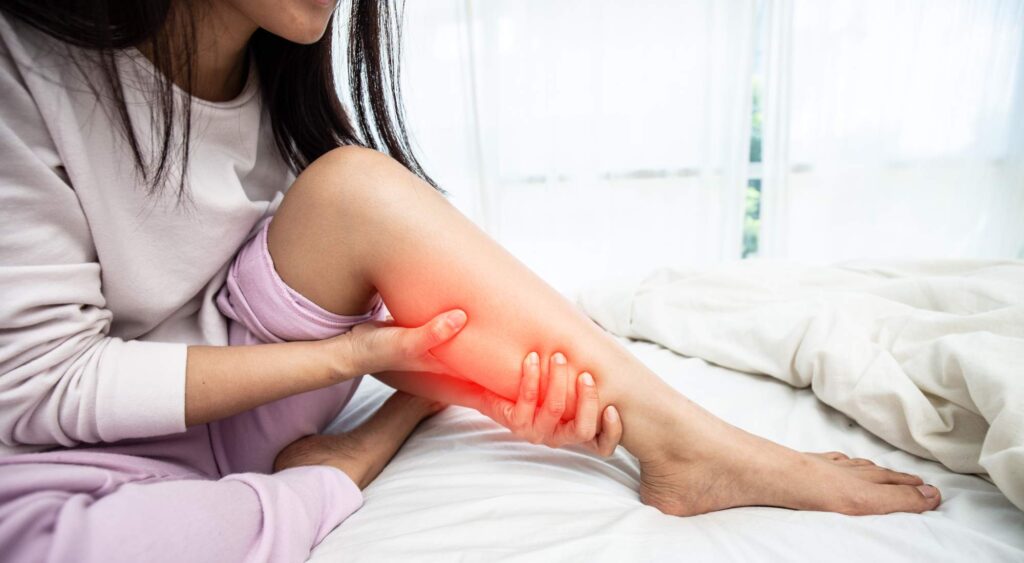Muscle Atrophy

Physical Therapy for Muscle Atrophy- Information, Exercises, and More
Muscle atrophy can leave you weak, tired, and feeling helpless.
If you’re experiencing symptoms of muscle atrophy — you’re not alone. The good news is that many people have found relief from their symptoms.
Learn more about the cause of your condition, symptoms to look for, and how to find relief. Keep reading to learn how physical therapy for atrophied muscles can help.

Contents
- What Is Muscle Atrophy?
- 2 Types of Muscle Atrophy
- How Long Does It Take for Muscles To Atrophy?
- What Causes Muscle Atrophy?
- Medical Conditions That Can Cause Muscle Atrophy
- Muscle Atrophy Symptoms
- How Is Muscle Atrophy Diagnosed?
- Muscle Atrophy Treatment
- Can Physical Therapy Help With Muscle Atrophy?
- How Long Does It Take To Strengthen Atrophied Muscles?
- 5 Best Physical Therapy Exercises for Muscle Atrophy
- How In Motion O.C. Can Help With Muscle Atrophy
What Is Muscle Atrophy?
Muscle atrophy is the loss or thinning of your muscle mass. With muscle atrophy, your muscles look smaller than normal. If you have atrophied muscles, you’ll see a decrease in both your muscle mass and strength.
2 Types of Muscle Atrophy
- Disuse (Physiologic) – This type of atrophy is caused by not using the muscles enough. It can often be reversed with exercise and better nutrition.
- Neurogenic – This is the most severe type of muscle atrophy. It can be from an injury to or disease of a nerve that connects to the muscle. This form of muscle atrophy tends to occur more suddenly than physiologic atrophy.
How Long Does It Take for Muscles To Atrophy?
The amount of time it takes for muscles to atrophy depends on:
- Your age
- Your fitness level; and
- The cause of the atrophy
If your muscle atrophy is due to disuse, the process can start within two to three weeks of not using your muscles.
Neurogenic muscle atrophy may develop sooner, depending on your health condition.
What Causes Muscle Atrophy?
The cause of muscle atrophy depends on the type.
Disuse atrophy may affect you if you:
- Are malnourished
- Lead a sedentary lifestyle
- Are on bed rest
- Sit at a desk job all day
- Don’t get enough exercise
Neurogenic atrophy is caused by an injury or disease affecting the nerves that connect to your muscles.
Other causes of muscle atrophy may include:
- Burns
- Aging
- Long-term corticosteroid therapy
- Alcohol-associated myopathy
- Injuries, such as torn rotator cuff or broken bones
- Spinal cord or peripheral nerve injuries
- Stroke
Medical Conditions That Can Cause Muscle Atrophy
Some medical conditions that can lead to muscle weakness and atrophy include:
- Amyotrophic lateral sclerosis (ALS), or Lou Gehrig’s disease
- Dermatomyositis
- Guillain-Barré syndrome
- Multiple sclerosis
- Muscular dystrophy
- Neuropathy
- Osteoarthritis
- Polio
- Spinal muscular atrophy
- Rheumatoid arthritis
- Polymyositis
Muscle Atrophy Symptoms
The symptoms of muscle atrophy may differ depending on the cause of your condition. The most obvious and common sign of muscle atrophy is reduced muscle mass.
Other signs of muscle atrophy may include:
- Weakness in one arm and/or leg
- Trouble walking or balancing
- One arm or leg is smaller than the other
- Facial weakness
- Numbness or tingling in your arms and legs
- Gradual memory loss
- Difficulty swallowing or speaking
Call your healthcare provider to schedule a complete medical examination if you believe you may have muscle atrophy, or if you are unable to move normally.
How Is Muscle Atrophy Diagnosed?
To diagnose muscle atrophy, your healthcare provider will begin by giving you a physical exam and asking about your medical history and symptoms. They’ll look at your arms and legs and measure your muscle mass.
Your healthcare provider may also order tests, including:
- Blood tests
- X-rays
- Muscle or nerve biopsy
- Electromyography (EMG)
- MRI scans
- Nerve conduction studies
- CT scans
Depending on the test results, your doctor may refer you to a specialist for further evaluation.
Muscle Atrophy Treatment
Treatment for muscle atrophy depends on the type and may include:
- Physical therapy
- Regular exercise
- Dietary changes or supplements
Surgery (in some cases of contracture deformity)
Can Physical Therapy Help With Muscle Atrophy?
Yes, physical therapists regularly help patients recover from muscle atrophy.
Physical therapy is the leading treatment option for muscle atrophy.
A therapist will assess your muscle weakness and design a plan specific to your symptoms. This typically consists of low-impact exercises that target the affected muscles. As the treatment plan progresses, the intensity of the exercises should gradually ramp up.
Neurogenic atrophy can sometimes be treated with a special kind of physical therapy called electrical stimulation. This can help you maintain your muscle mass and strength. Your physical therapist will place electrodes on your skin over your muscles. The electrodes send small electrical impulses to your nerves and muscles, causing them to contract.
Your physical therapist may also recommend ultrasound therapy — using sound waves to promote muscle healing.
How Long Does It Take To Strengthen Atrophied Muscles?
This depends on the type of atrophy and the severity of your condition.
Disuse atrophy is usually reversible. You may recover from muscle atrophy with daily exercise and a healthy diet.
You may start seeing improvement after a few months — but it may take much longer to fully recover your strength.
5 Best Physical Therapy Exercises for Muscle Atrophy
Strengthening exercises are typically combined with flexibility and balance exercises to ensure you’re developing muscle strength safely and effectively.
Here are a few exercises that you may be able to perform at home to strengthen atrophied muscles.
#1: Partial Sit-Up
To strengthen your core:
- Begin just like a regular sit-up with your back on the floor, both feet on the floor, and your knees bent.
- Raise your head, neck, and shoulders off of the floor and hold that position for five seconds.
- Repeat as many times as you can to increase your reps each day.
#2: Low Back Extension
To stretch your lower back:
- Start by laying flat on your stomach with your hands to your side.
- Lift your head and upper body off of the ground by using your lower back muscles.
- Hold this position for 4–5 seconds, then lower yourself back down.
- Repeat 10–15 times.
#3: Knees To Chest
To stretch your back and glutes:
- Begin just like a regular sit-up with your back on the floor, both feet on the floor, and your knees bent.
- Draw one of your knees to your chest, using both hands (only one foot is now in the air).
- Hold to the count of 10, then slowly release it to the rest position.
- Do 4–5 repetitions, repeat with your other leg, then both legs at the same time.
#4: Superman
To strengthen your back and glutes:
- Lie face-down with your arms extended above your head.
- Tighten your abdominal muscles and lift your arms and legs off the ground. It should look like you are in a Superman-like flying position.
- Control your breathing while holding this position for 30 seconds.
#5: Stability Ball Push-Ups
To strengthen your chest and shoulder muscles:
- Start with the ball under your stomach with your hands in front of you on the floor.
- Roll forward slowly until your shins are balanced on the stability ball.
- Perform push-ups as you normally would by bending at the elbow.
How In Motion O.C. Can Help With Muscle Atrophy
Our experienced physical therapists specialize in treating patients suffering from muscle atrophy. We help patients improve their quality of life with treatment programs designed to address their condition safely and effectively.
At In Motion O.C., we can work with you no matter what level of physical activity you are at to help you regain your strength and build up your muscles. We use a wide variety of treatment methods to personalize a program for you.
By staying active with physical therapy and using your muscles on a weekly and daily basis, we can help you fight off the symptoms of muscle atrophy.
Ready to have relief from muscle atrophy symptoms? Request a free screening today.
The content in this blog should not be used in place of direct medical advice/treatment and is solely for informational purposes.


